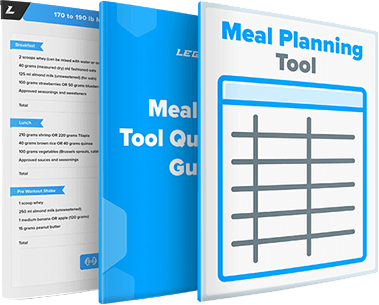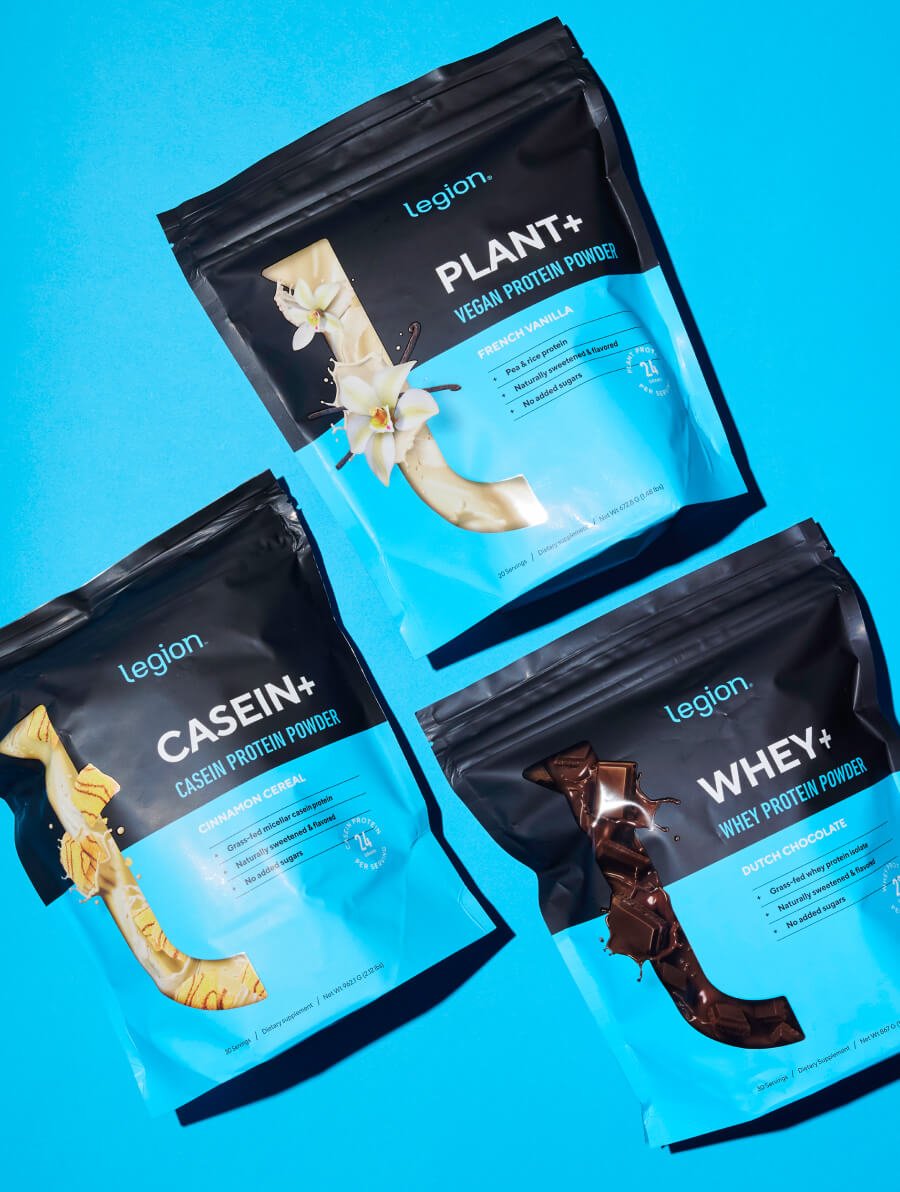Listen on Apple Podcasts | Listen on Spotify | Listen on YouTube
“Remember to breathe” someone says as they walk past you while you’re sporting your tomato face during a hard set of squats.
You nod, smile, and ignore them, but you also wonder . . . could they be right?
You’ve heard more and more noise about how holding your breath while lifting could be dangerous.
This technique is officially known as the Valsalva maneuver, and it’s become quite a controversial subject among us fitness folk.
Some say it increases your risk of fainting, aneurysm, stroke, and blood vessel damage. They also claim there’s no evidence that it improves your performance or makes lifting any safer, so it’s all risk and no reward.
This is why many trainers tell their clients to breathe continuously while lifting, why doctors often tell their patients not to use the Valsalva maneuver, and why the American Heart Association warns against it, too.
A few minutes of digging on the Internet brings up videos of people collapsing, dropping barbells on themselves, and passing out and crashing face first into the ground. (I’ll spare you the gory details, but if you want to see for yourself, Google “original deadlift passout video.” It’s not pretty).
Others say the Valsalva maneuver is not only safe, but an essential technique for safely lifting heavyweight.
Who’s right?
Well, the short story is this:
The Valsalva maneuver could increase the risk of stroke, blood vessel damage, and fainting, but only for a handful of people with a high risk of cardiovascular problems. For otherwise healthy people, the Valsalva maneuver is a safe way to you lift more weight and will probably lower your risk of injury, too.
By the end of this episode, you’ll know what the Valsalva maneuver is, why people use it, whether or not it’s as dangerous as many people say it is, who should and shouldn’t use it, how to do it correctly, and more.
Let’s start at square one.
What did you think of this episode? Have anything else to share? Let me know in the comments below!
Transcript:
This episode is brought to you by me. Seriously, though, I’m not big on promoting stuff that I don’t personally use and believe in. So instead, I’m going to just quickly tell you about something of mine, specifically my hugely popular and 100 percent natural pre workout supplement pulse. It has sold over 250, 000 bottles in the last several years.
And it increases energy, improves mood, sharpens mental focus, increases strength and endurance, and reduces fatigue without the unwanted side effects that you probably experience with many other pre workouts or the dreaded post workout crash. It’s also naturally sweetened and flavored and contains no artificial food dyes, fillers, or other unnecessary junk.
And all of that is why Pulse has over 3, 100 reviews on Amazon with a 4. 5 star average and another 500 plus reviews on my website, also with a 4. 5 star average. If you want to feel focused, tireless, and powerful in your workouts, and if you want to say goodbye to the pre workout jitters, upset stomachs, and crashes for good, then you want to head over to www.
legionathletics. com and pick up a bottle of Pulse today. And if you’re not sure which flavor to get, I highly recommend blue raspberry. It’s my personal favorite. And just to show how much I appreciate my podcast peeps, use the coupon code podcast at checkout and you will save 10 percent on your entire order.
And lastly, you should also know that I have a very simple 100 percent money back guarantee that works like this. You either love my stuff or you get your money back, period. You don’t have to return the products. You don’t have to fill out forms. You don’t have to jump through any other hoops or go through any other shenanigans.
So you really can’t lose here. Head over to www. legionathletics. com now. Place your order and see for yourself why my supplements have thousands of rave reviews all over the internet. And if for whatever reason, they’re just not for you, contact us and we will give you a full refund on the spot. Alrighty, that is enough shameless plugging for now at least.
Let’s get to the show. Hey, Mike Matthews here from Muscle for Life and Legion Athletics. And in this video podcast, I want to talk to you about breathing while weightlifting, why it is important to breathe correctly while you are lifting. Now, if you’ve already poked around a bit online for breathing techniques while lifting and are now confused, I understand there’s a lot of contradictory advice out there as to how you should and shouldn’t breathe.
For example, some people say you should never hold your breath while lifting weights because while it may feel like the natural, instinctive thing to do, it can increase your risk of fainting, of having an aneurysm, a stroke, or causing blood vessel damage, and furthermore, these people often say that holding your breath doesn’t even have any benefits.
It doesn’t even increase your performance. Now, on the other hand, you can find a lot of top tier strength coaches and weightlifters like Olympic lifters, powerlifters, and bodybuilders who say that most people should be holding their breath when lifting, or at least during the hardest portion of their lifts, because it not only does that.
And that’s why many expert and competitive weightlifters use what’s called the Valsalva maneuver, which we are going to talk about in this video. So again, if you’re confused, I understand. And I want to give you the long story short. The long story short is using the Valsalva maneuver, which we are going to talk about what, but which does come down to holding your breath during the Valsalva maneuver.
Hardest portion of your lifts, it can increase the risk of stroke, blood vessel damage and fainting, but only in a minority of people who already have a high risk of cardiovascular problems in otherwise healthy people like you, I’m assuming. And me, however, the Valsalva maneuver helps us improve our performance.
It helps us lift more weight and it probably lowers our risk of injury as well. And that’s why, again, for those of us who are not predisposed to cardiovascular problems, the right way to breathe when you are weightlifting is to use the Valsalva Maneuver. Hey, quickly, before we carry on, if you are liking my podcast, would you please help spread the word about it?
Because no amount of marketing or Advertising gimmicks can match the power of word of mouth. If you are enjoying this episode and you think of someone else who might enjoy it as well, please do tell them about it. It really helps me. And if you are going to post about it on social media, definitely tag me so I can say, Thank you.
You can find me on Instagram at muscle for life fitness, Twitter at muscle for life and Facebook at muscle for life fitness. Okay. So what is the Valsalva maneuver? It’s basically just forcefully breathing out against a closed windpipe, which carries the air to and from your lungs, right? So what it is it’s taking a deep breath.
And trapping that air in your lungs forcefully, and the reason why it’s good is because it increases intra abdominal pressure, which stabilizes your torso and helps you maintain proper form, especially on exercises like the squat, deadlift, overhead press, and especially when you are using heavy loads.
Now, chances are you’ve done the original Valsalva maneuver, which was developed back in the 17th century by a physician named Antonio Valsalva. And he developed it to help his patients clear fluid from the inner ear. And how you do it is you plug your nose, And then you blow out creating that pressure in your head that is pushing outward.
Now, the Valsalva maneuver for weightlifting is a bit different. Of course, that would be an amusing way to squat, but I don’t recommend it. Instead, what you want to do is five steps. The first step is fill your lungs with about 80 percent of the air that they can hold. So this is the point at which your lungs feel full, but not so full that you’re having trouble keeping your mouth closed.
And next you want to press your tongue against the roof of your mouth and now you are ready to perform your rep. So let’s say you’re squatting and you get under the bar, you unrack it, you get into position, you then take your deep breath, you press your tongue against the roof of your mouth and now you’re actually ready to squat.
Now the next thing you do is you try to breathe out. And by doing that, you’re going to create a lot of pressure in your stomach. You’re going to feel your core get very tight and your stomach is going to push out a bit as you are trying to push the air out of your lungs, but it can’t get out because your wind pipe is closed due to your tongue being pressed against the roof of your mouth.
Now you squat. Now you descend. So you descend, you get to the bottom and then you start ascending. And once you get past that sticking point, then you can start breathing out as you complete your rep. And then of course you reset at the top of each rep. So you have breathed out and now you’re standing, you take the breath, you press your tongue against the roof of your mouth.
You then try to Push the air out of your lungs, creating that intra abdominal pressure. Descend, ascend, breathe out, repeat. Important point here is do not try to hold your breath for too many reps, and especially not on a difficult exercise like the squat or the deadlift. I personally like to reset after every one or two reps, usually after every rep.
If you try to hold your breath for too long, you can pass out. Okay, so now let’s talk safety. Is the Valsalva Maneuver safe? And the people who say that it is not safe usually say that it’s because it spikes your blood pressure and that a large increase in blood pressure can increase your risk of blood vessel damage, stroke, and other injuries.
Now, there is some truth here because the Valsalva Maneuver does increase blood pressure levels. However, so does weightlifting significantly, and so does any exercise whatsoever for that matter. So the real question is, if the Valsalva Maneuver increases blood pressure levels to dangerously high levels, and when you look at the literature available on the matter, the scientific research available on it, the answer is no.
Pretty clearly, no, for most people, that is not the case. Now, if you want to check out an in depth discussion of that research, click the link up here to go to an article that my editor in chief wrote about it. Good article. Do recommend if you really want to get into the details. Now, just to wrap up with our little discussion on the safety of the Valsalva maneuver, there are three people who should not get involved.
And the first are people who have a history of heart problems or high blood pressure. And the reason for here is obvious because of Valsalva maneuver does significantly increase blood pressure higher than what you normally experience when you’re lifting weights. If you have a high risk of heart problems or if you are hypertensive, it is not a good idea.
The second person who should not use the Valsalva maneuver is somebody who gets lightheaded when they do it. Large swings and blood pressure can cause you to become lightheaded, slightly dizzy, disoriented, and that’s obviously not what you want when you have a bunch of weight on your back or if you’re trying to pull a bunch of weight off of the ground.
Now that said, something you should know though is that often occurs because people try to hold their breath for too long. So before you rule it out completely, if you’re getting lightheaded. Try resetting after each rep and the third and final person who should not use the Valsalva maneuver is somebody who has injured themselves with it before.
Now, this is a lot harder to do than some people would have you believe, but you can get hurt using the Valsalva maneuver. It’s very rare, but it can happen. So if that has happened to you, you probably shouldn’t continue to use it. Even if your body has adapted to it over time, even if you We’re using it.
Injure yourself and then started using it again and seems to be going well. It might be better to just not use it at all. Hey there. It is Mike again. I hope you enjoyed this episode and found it interesting and helpful. And if you did and don’t mind doing me a favor and want to help me make this the most popular health and fitness podcast on the internet, then please leave a quick comment.
Review of it on iTunes or wherever you’re listening from. This not only convinces people that they should check the show out, it also increases its search visibility and thus helps more people find their way to me and learn how to build their best bodies ever too. And of course, if you want to be notified when the next episode goes live, then just subscribe to the podcast and you won’t miss out on any of the new goodies.
Lastly, if you’d didn’t like something about the show, then definitely shoot me an email at Mike at muscle for life. com and share your thoughts on how you think it could be better. I read everything myself and I’m always looking for constructive feedback. So please do reach out. All right. That’s it.
Thanks again for listening to this episode. And I hope to hear from you soon. And lastly, this episode is brought to you by me seriously though. I’m not big on promoting stuff that I don’t personally use and believe in. So instead I’m going to just quickly tell you about something of mine, specifically my hugely popular and 100 percent natural pre workout supplement pulse.
It has sold over 250, 000 bottles in the last several years, and it increases energy, improves mood, sharpens mental focus, increases strength and endurance, and reduces fatigue without the unwanted side effects that you probably experience with many other pre workouts or the dreaded post workout crash.
It’s also naturally sweetened and flavored and contains no artificial food dyes, fillers, or other unnecessary junk. And all of that is why pulse has over 3, 100 reviews on Amazon with a four and a half star average and another 500 plus reviews on my website. Also with a four and a half star. So if you want to feel focused, tireless, and powerful in your workouts, and if you want to say goodbye to the pre workout jitters, upset stomachs, and crashes for good, then you want to head over to www.
getfit. com. Legion athletics.com and pick up a bottle of pulse today. And if you’re not sure which flavor to get, I highly recommend Blue Raspberry. It’s my personal favorite. And just to show how much I appreciate my podcast peeps, use the coupon code podcast that checkout and you will save 10% on your entire order.
And lastly, you should also know that I have a very simple 100% money back guarantee that works like this. You either love my stuff or you get your money back, period. You don’t have to return the products, you don’t have to fill out forms. You don’t have to jump through any other hoops or go through any other shenanigans, so you really can’t lose here.
Head over to www.legionathletics.com now. Place your order and see for yourself why my supplements have Thousands of rave reviews all over the internet and if for whatever reason they’re just not for you Contact us and we will give you a full refund on the spot
Scientific References +
- Williams, M. A., Haskell, W. L., Ades, P. A., Amsterdam, E. A., Bittner, V., Franklin, B. A., Gulanick, M., Laing, S. T., & Stewart, K. J. (2007). Resistance exercise in individuals with and without cardiovascular disease: 2007 update: A scientific statement from the American Heart Association Council on Clinical Cardiology and Council on Nutrition, Physical Activity, and Metabolism. In Circulation (Vol. 116, Issue 5, pp. 572–584). Circulation. https://doi.org/10.1161/CIRCULATIONAHA.107.185214
- Blanchard, T. W., Smith, C., & Grenier, S. G. (2016). In a dynamic lifting task, the relationship between cross-sectional abdominal muscle thickness and the corresponding muscle activity is affected by the combined use of a weightlifting belt and the Valsalva maneuver. Journal of Electromyography and Kinesiology, 28, 99–103. https://doi.org/10.1016/j.jelekin.2016.03.006
- Hackett, D. A., & Chow, C. M. (2013). The valsalva maneuver: Its effect on intra-abdominal pressure and safety issues during resistance exercise. Journal of Strength and Conditioning Research, 27(8), 2338–2345. https://doi.org/10.1519/JSC.0b013e31827de07d
- MacDougall, J. D., Tuxen, D., Sale, D. G., Moroz, J. R., & Sutton, J. R. (1985). Arterial blood pressure response to heavy resistance exercise. Journal of Applied Physiology, 58(3), 785–790. https://doi.org/10.1152/jappl.1985.58.3.785
- Wielemborek-Musial, K., Szmigielska, K., Leszczynska, J., & Jegier, A. (2016). Blood Pressure Response to Submaximal Exercise Test in Adults. BioMed Research International, 2016. https://doi.org/10.1155/2016/5607507
- Narloch, J. A., & Brandstater, M. E. (1995). Influence of breathing technique on arterial blood pressure during heavy weight lifting. Archives of Physical Medicine and Rehabilitation, 76(5), 457–462. https://doi.org/10.1016/S0003-9993(95)80578-8
- Whelton, P. K., Carey, R. M., Aronow, W. S., Casey, D. E., Collins, K. J., Himmelfarb, C. D., DePalma, S. M., Gidding, S., Jamerson, K. A., Jones, D. W., MacLaughlin, E. J., Muntner, P., Ovbiagele, B., Smith, S. C., Spencer, C. C., Stafford, R. S., Taler, S. J., Thomas, R. J., Williams, K. A., … Wright, J. T. (2018). 2017 ACC/AHA/AAPA/ABC/ACPM/AGS/APhA/ASH/ ASPC/NMA/PCNA guideline for the prevention, detection, evaluation, and management of high blood pressure in adults: Executive summary: A report of the American college of cardiology/American Heart Association task force on clinical practice guidelines. In Hypertension (Vol. 71, Issue 6, pp. 1269–1324). Lippincott Williams and Wilkins. https://doi.org/10.1161/HYP.0000000000000066
- Kerr, Z. Y., Collins, C. L., & Dawn Comstock, R. (2010). Epidemiology of Weight Training-Related Injuries Presenting to United States Emergency Departments, 1990 to 2007. In American Journal of Sports Medicine (Vol. 38, Issue 4, pp. 765–771). SAGE Publications Inc. https://doi.org/10.1177/0363546509351560
- Jumbelic, M. I. (2007). Traumatic Asphyxia in Weightlifters. Journal of Forensic Sciences, 52(3), 702–705. https://doi.org/10.1111/j.1556-4029.2007.00429.x
- Fleck, S. J., & Dean, L. S. (1987). Resistance-training experience and the pressor response during resistance exercise. Journal of Applied Physiology, 63(1), 116–120. https://doi.org/10.1152/jappl.1987.63.1.116
- Barauna, V. G., Rosa, K. T., Irigoyen, M. C., & de Oliveira, E. M. (2007). Effects of resistance training on ventricular function and hypertrophy in a rat model. Clinical Medicine and Research, 5(2), 114–120. https://doi.org/10.3121/cmr.2007.707
- Fernandes, T., Soci, U. P. R., & Oliveira, E. M. (2011). Eccentric and concentric cardiac hypertrophy induced by exercise training: MicroRNAs and molecular determinants. In Brazilian Journal of Medical and Biological Research (Vol. 44, Issue 9, pp. 836–847). Braz J Med Biol Res. https://doi.org/10.1590/S0100-879X2011007500112
- Chiu, H. T., & Garcia, C. K. (2006). Familial spontaneous pneumothorax. In Current Opinion in Pulmonary Medicine (Vol. 12, Issue 4, pp. 268–272). Curr Opin Pulm Med. https://doi.org/10.1097/01.mcp.0000230630.73139.f0
- Wells, C. G., & Kalina, R. E. (1985). Progressive Inherited Retinal Arteriolar Tortuosity with Spontaneous Retinal Hemorrhages. Ophthalmology, 92(8), 1015–1024. https://doi.org/10.1016/S0161-6420(85)33905-2
- Mohan, D., Munteanu, V., Coman, T., & Ciurea, A. V. (2015). Genetic factors involves in intracranial aneurysms--actualities. In Journal of medicine and life (Vol. 8, Issue 3, pp. 336–341). Carol Davila - University Press. /pmc/articles/PMC4556916/?report=abstract
- Inamasu, J., & Miyatake, S. (2013). Cardiac arrest in the toilet: Clinical characteristics and resuscitation profiles. Environmental Health and Preventive Medicine, 18(2), 130–135. https://doi.org/10.1007/s12199-012-0301-y
- Schoenfeld, B. J. (2010). The mechanisms of muscle hypertrophy and their application to resistance training. In Journal of Strength and Conditioning Research (Vol. 24, Issue 10, pp. 2857–2872). J Strength Cond Res. https://doi.org/10.1519/JSC.0b013e3181e840f3
- Schroth, M., Plank, C., Meißner, U., Eberle, K. P., Weyand, M., Cesnjevar, R., Dötsch, J., & Rascher, W. (2006). Hypertonic-hyperoncotic solutions improve cardiac function in children after open-heart surgery. Pediatrics, 118(1). https://doi.org/10.1542/peds.2005-2795










